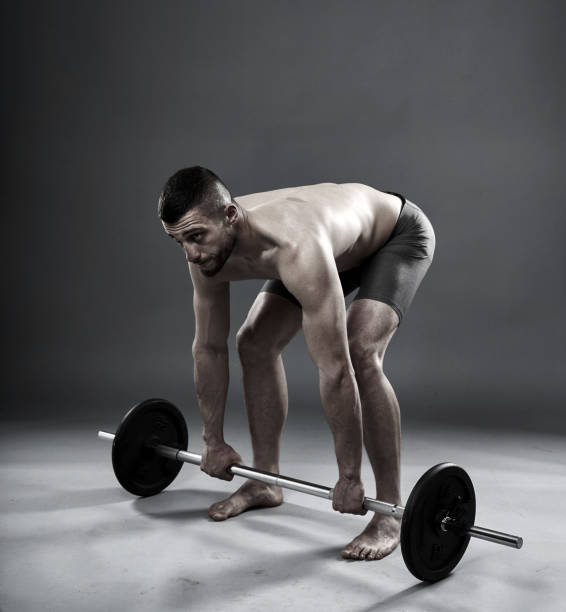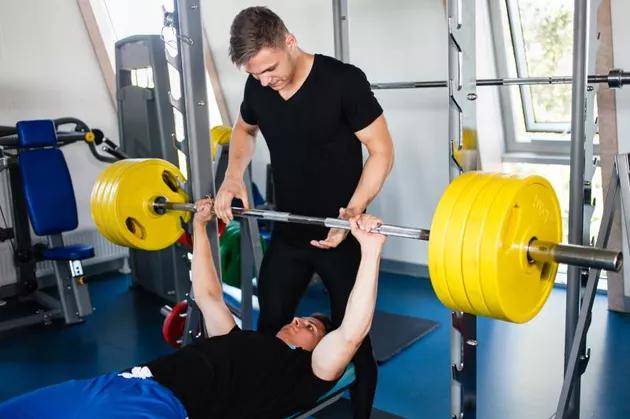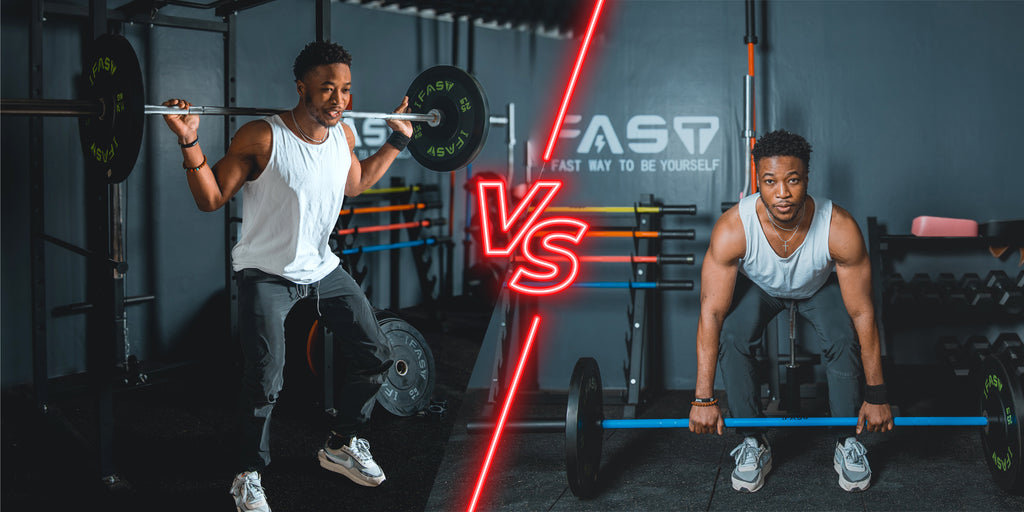
In the realm of strength training, few exercises command as much respect as the deadlift and the squat. These foundational movements are the cornerstone of any robust workout routine, offering a multitude of benefits for both body and mind. But when it comes down to it, which reigns supreme: the mighty deadlift or the classic squat?
Join us on a journey through the intricacies of these powerhouse exercises as we explore their mechanics, benefits, and potential pitfalls. From building strength and muscle mass to enhancing overall athleticism, each lift brings its own unique set of advantages to the table.
Understanding the Deadlift
The deadlift is a compound movement that primarily targets the muscles of the lower body, including the hamstrings, glutes, and lower back, as well as the upper body muscles, including the traps and lats. It involves lifting a loaded barbell from the ground to a standing position, using a hip hinge movement pattern.

Benefits of the Deadlift
-
Strength Development: The deadlift is one of the most effective exercises for building overall strength, particularly in the posterior chain muscles.
-
Functional Movement: The deadlift mimics everyday movements like lifting objects off the ground, making it a functional exercise for improving daily life activities.
-
Muscle Engagement: Deadlifts engage multiple muscle groups simultaneously, making them a time-efficient exercise for full-body strength development.
-
Bone Health: Deadlifts are weight-bearing exercises that help promote bone density and reduce the risk of osteoporosis.
Related: How to do a deadlift
Deadlift Variations
- Conventional Deadlift: The most common form, involving a hip-width stance and a grip outside the legs.
- Sumo Deadlift: Wider stance with hands positioned inside the knees, emphasizing the glutes and inner thighs.
- Romanian Deadlift: Involves a slight knee bend and focuses on the hamstrings and glutes.
- Trap Bar Deadlift: Uses a trap bar that reduces stress on the lower back while targeting similar muscle groups.
Related: How to Do Romanian Deadlift
Understanding the Squat
The squat is another compound movement that targets the lower body muscles, including the quadriceps, hamstrings, and glutes, as well as the core muscles for stabilization. It involves lowering the body into a seated position by bending at the knees and hips and then returning to a standing position.
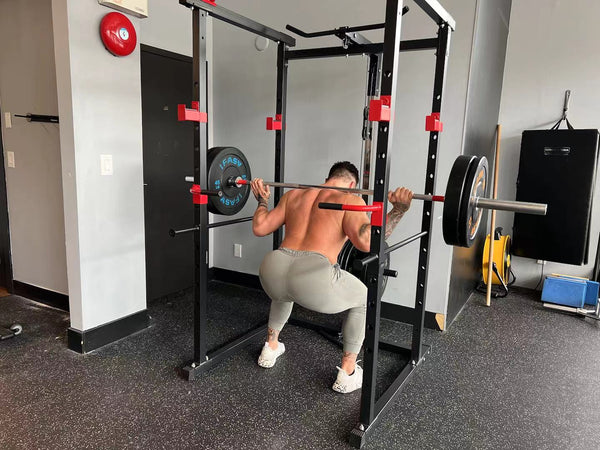
Benefits of the Squat
-
Lower Body Strength: Squats are renowned for their ability to build lower body strength, particularly in the quadriceps and glutes.
-
Improved Mobility: Squats help improve hip, knee, and ankle mobility, which is essential for maintaining proper movement patterns and reducing the risk of injury.
-
Core Stability: Squats engage the core muscles to stabilize the spine and pelvis, helping to improve overall core strength and stability.
-
Functional Fitness: Like the deadlift, squats mimic natural movement patterns and are essential for functional fitness and daily activities.
Related: How to squat properly
Squat Variations
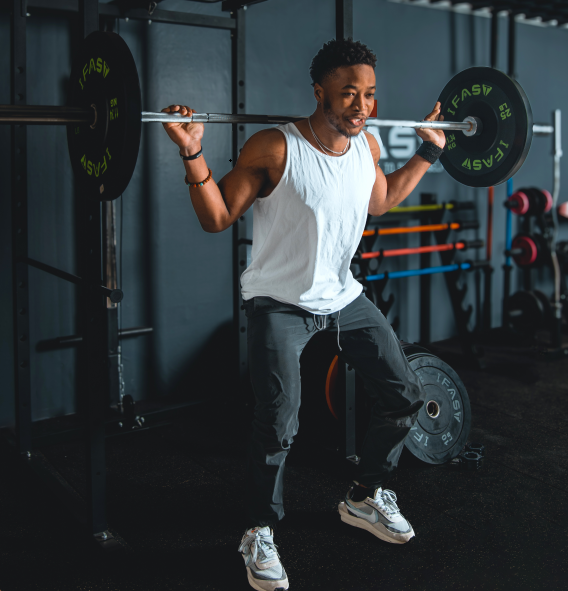
Back Squat: Performed with a barbell on the upper back, emphasizing quadriceps and glute activation.
Front Squat: Barbell held in front of the shoulders, placing more emphasis on the quadriceps and core.

Goblet Squat: Involves holding a adjustable dumbbell or kettlebell in front of the chest, suitable for beginners and emphasizing proper form.
Bulgarian Split Squat: A unilateral exercise that targets each leg individually, improving balance and stability.
Related: Front Squat Vs Back Squat
How to Do Bulgarian Split Squat
Safety Considerations
Safety is paramount when performing both deadlifts and squats to avoid injury and maximize results.
Deadlift Safety
- Proper form and technique, including maintaining a neutral spine and engaging the core.
- Gradually increasing weight while ensuring a controlled movement.
- Proper warm-up and mobility exercises to prepare the muscles and joints.
- Using a supportive lifting belt if necessary to provide additional stability.
Squat Safety
- Maintaining proper form, including keeping the knees aligned with the toes and maintaining an upright torso.
- Using appropriate weights and gradually increasing the load.
- Employing safety equipment like squat racks and safety bars for added protection.
- Incorporating mobility exercises to enhance hip and ankle flexibility.
Deadlift Vs Squat: Which is Better?
While both exercises offer undeniable benefits, the choice between the deadlift and the squat often comes down to individual goals, preferences, and physical limitations. Here are some factors to consider:
Goals
If your primary focus is developing maximum overall body strength and power, the deadlift may be the superior choice, as it engages more muscle groups simultaneously. However, if you're primarily interested in lower body development and athletic performance, the squat may take precedence.
Injury History and Mobility
For individuals with pre-existing lower back issues or limited mobility, the squat may be a safer option, as it places less direct stress on the spine. Conversely, those with knee or ankle issues may find the deadlift more accommodating.
Training Experience
For beginners, mastering the squat's complex movement pattern and developing sufficient mobility may be more achievable initially, making it a logical starting point. As experience increases, the deadlift can be gradually introduced and emphasized.
Leverages and Anthropometry
An individual's unique body proportions and leverages can influence which lift feels more natural and comfortable. For example, those with longer arms or torso may find the deadlift more advantageous, while those with longer legs may excel at squatting.
Integrating Deadlifts and Squats for Optimal Results
While the debate between deadlifts and squats can be spirited, the truth is that both exercises offer immense value and should be incorporated into a well-rounded strength training program. By strategically combining these movements, you can maximize overall strength, muscle development, and functional fitness.
One effective approach is to prioritize one lift as your primary compound exercise while using the other as a supplemental or accessory movement. For example:
- If your primary goal is maximum strength and power, the deadlift could be your main lift, with squats incorporated as a supplemental exercise for lower body development and overall muscle growth.
- If your focus is on athletic performance or building an impressive physique from the ground up, the squat could take center stage, with deadlifts used as a valuable accessory for posterior chain development and overall strength.
Additionally, periodization and rotation of these lifts can be an effective strategy, allowing you to emphasize different aspects of your training at different times. For instance, you could dedicate a training block to prioritizing the deadlift for several weeks, followed by a squat-focused block to maintain balance and promote overall development.
Regardless of your chosen approach, it's crucial to prioritize proper form and technique for both exercises. Seek guidance from qualified coaches or trainers, especially when introducing new lifts or progressing to heavier weights. Proper execution not only maximizes the benefits of these movements but also helps prevent injuries and ensures long-term progress.
The deadlift and the squat are more than just exercises; they are pillars of strength training that have stood the test of time. While the debate over their respective merits may continue, the true path to success lies in embracing the unique strengths of both movements and integrating them strategically into your training program. By doing so, you'll unlock a world of strength, power, and overall physical development that will propel you towards your ultimate fitness goals.

